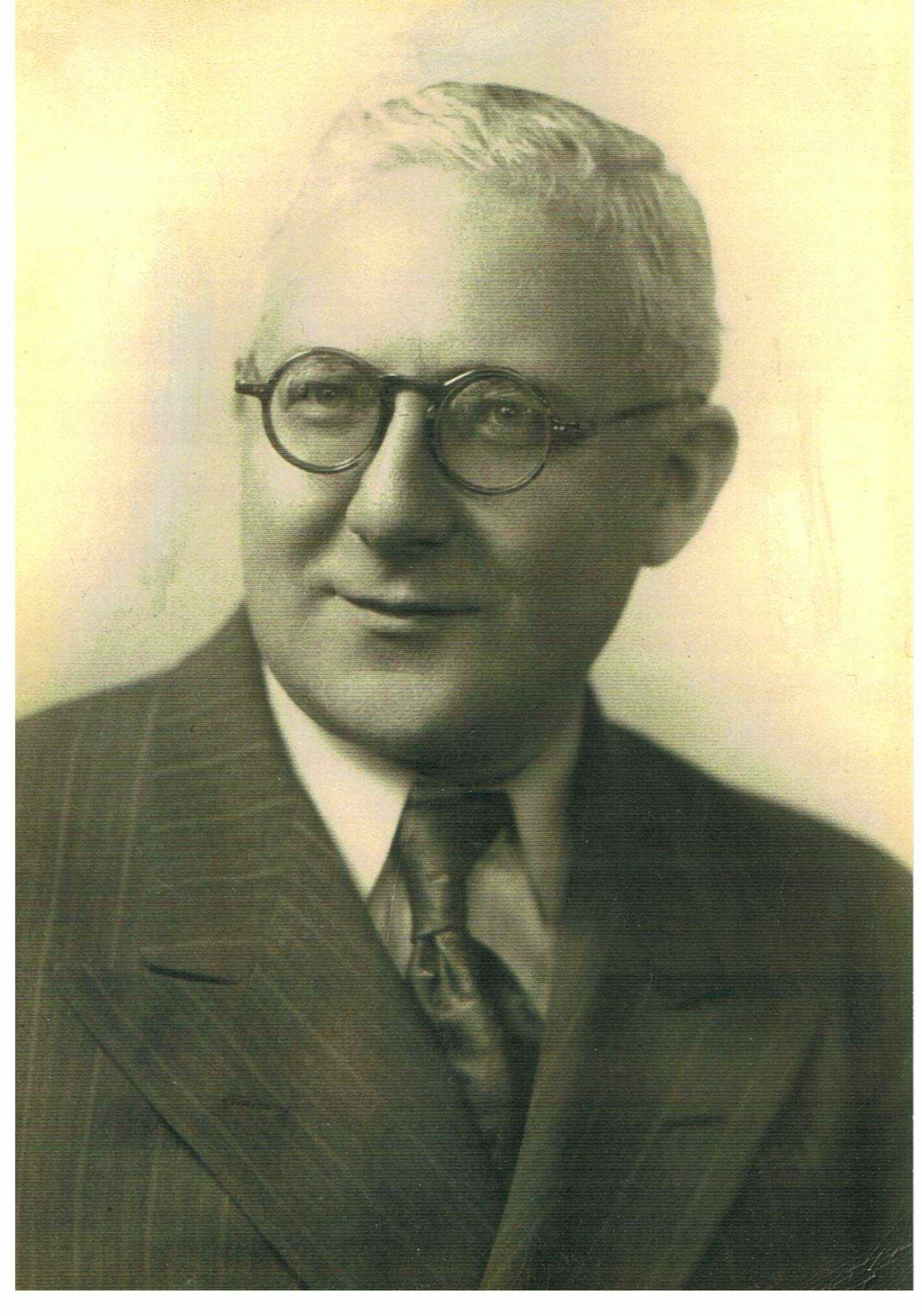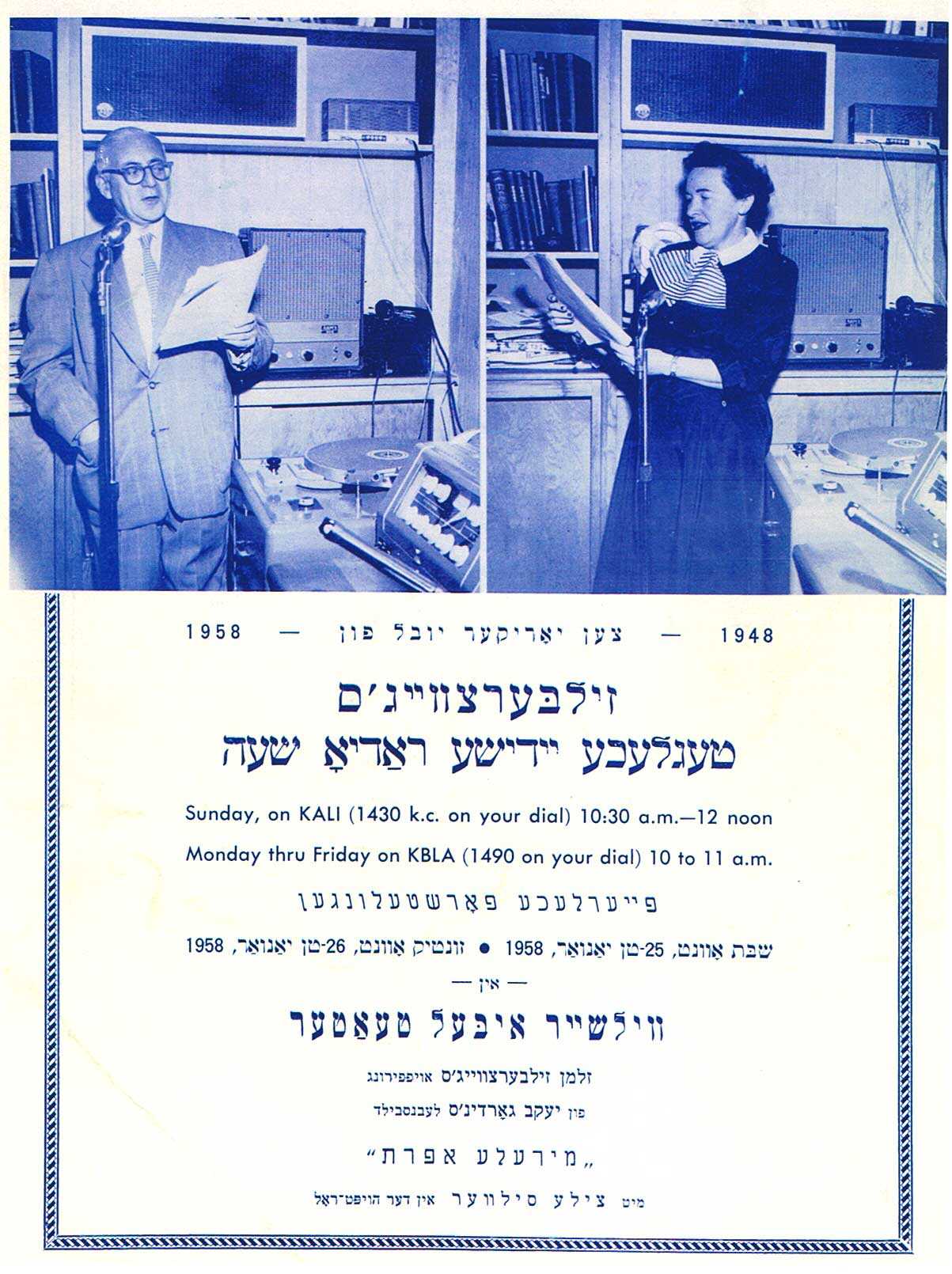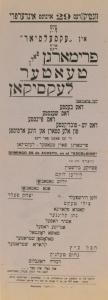
Zalmen Zylbercweig
Zalmen Zylbercweig, Shnorer-historian of the Yiddish Theatre
Faith Jones
If you’re reading this blog, it’s safe to say you have at least a passing interest in Yiddish theatre. You may not realize it, but the only reason we can find out much of the stuff we blog about is because of one guy. Zalmen Zylbercweig.
Zylbercweig edited and wrote most of the Leksikon fun yidishn teater, the Encyclopedia of Yiddish Theatre, the seven volumes of which he worked on for most of his life. When he died in 1972, aged 77, he had been working on it for 54 years. He was still at it when he died: the final volume was in page proofs and all he had left to do was raise the money to print it. In five decades of publishing a never-profitable major work, he had perfected the art of the Jewish shnor: banquets, fundraising performances, pre-sales. He had probably expected to continue that way for another year or so, come up with the cash for printing, and retire. After his death there was no one left to raise the money and the page proofs stayed just that.
Zylbercweig wasn’t a trained historian. He had wanted to be an actor, but wasn’t talented that way. It turned out his skill lay in words. He wrote and translated material for the theatre instead, still enamored of the stage and still wanting to spend his life there, even if only in the wings. This turned out to be no way to make a living, and he went into journalism. He edited a daily newspaper in Łódź, Poland, while still in his early twenties. He still went to the theatre and at some point decided to compile material on it for both fans and theatre professionals. That material, the basis for this planned leksikon (dictionary or encyclopedia), kept growing and growing: the first volume appeared in 1931, but by that time he knew it was going to be way more than one book. A second volume arrived in 1934, but the Depression and the war delayed things after that. He relocated to New York, and later to Los Angeles, acquiring along the way a Yiddish actress as a wife—Celia Silver, as she later became known, when she was something of a celebrity in L.A. Jewish cultural circles. The two of them continued the shnorring, Zylbercweig kept collecting and writing material, and after 1959 volumes again started popping out.


The stuff inside it is amazing. Professional Yiddish theatre started incredibly suddenly in the 1870s, and within a few years there were already competing troupes and professional rivalries. Writing initially within a generation of these events, Zylbercweig was able to capture details that even a few years later would have been lost to history. I daresay every Yiddish theatre scandal can be found somewhere in its pages. The Leksikon isn’t the only book about Yiddish theatre from that era—the first attempt at a full-scale history was in 1918. In fact, Zylbercweig himself wrote many smaller works over the decades, repurposing material he had collected for the Leksikon to make a bit more cash for its publication.
But as wonderful as all these books are, the Leksikon remains the starting point for any serious study of Yiddish theatre. And this is partly because of its expansiveness. Not just its bulk, but its vision. Everyone and everything is in it, including many things other people wouldn’t have considered worthy of inclusion. It may be that Zylbercweig’s lack of historical training was a benefit in this way. In the academic historical tradition, using ephemera and other transitory records didn’t catch on until the 1970s. At that time, social historians called for the inclusion of voices left out of the political history of elites. Feminist historians also started advocating specifically for the inclusion of non-traditional sources, such as oral histories, that would allow women of the past to be seen and heard. These developments shook the scholarly discipline and changed our sense of priorities and even the meaning of history. Zylbercweig used all of these methods, and as far as I can tell, he did it all on instinct. In 1926, while he was preparing volume one, he wrote in Literarishe bleter (“Literary pages,” the foremost Yiddish literary magazine of its day) of his belief that the already-burgeoning body of theatrical memoirs was insufficient, as only the most famous actors and playwrights could hope to publish them. “What will become of the memories of those playwrights and actors whose experiences are no less, and often more, interesting?” he wrote.
But, of course, this is Yiddish culture we’re talking about, so somebody had to be outraged. Two people in particular were: Alexander Mukdoyni and Yankev Shatzky. As trained historians, they could not condone including minor as well as major figures, and they decried the expense of printing up books that would describe unimportant figures. At times they seemed to think anecdotes were unseemly, perhaps even bringing ridicule to Yiddish theatre. Shatzky wrote a scathing review in which he lambasted Zylbercweig’s style: “In Abraham Fishzon’s biography, for example, you find such ‘momentous’ historical facts as that the Broder zinger (folk bard) Isroel Grodner was paid for his “khiburim” (texts) (!) with… tobacco. Very important, don’t you think?” Actually, with the benefit of 100 years of hindsight, I do think it’s important. The economics of the early Yiddish theatre are fascinating, and with details like this one we can build a conception of how economically marginal communities created art. Point to Zylbercweig.
An even bigger complaint was that Zylbercweig had indicated that one of the grandes dames of Yiddish theatre, who was already dead at the time of writing, had previously worked in prostitution. You can only imagine how that got up their noses: yet seventy years later I was thrilled, as a feminist historian, to be able to follow this thread, to explore how Jewish women may have navigated financial independence. 1 In general, Zylbercweig has been a great source for information on women. There are lacunae, but it’s head-and-shoulders above what you find in most biographical dictionaries in the Jewish tradition. Twenty-eight percent of the entries in the first six volumes are for women, which is nothing short of astonishing.
If “put it in” was Zylbercweig’s starting proposition in the 1920s, after the Holocaust he had another reason for including as many seemingly-insignificant details as he could find. He was well aware that for most of his subjects, the Leksikon would be the only place they would be biographized. He became unwilling to distinguish between lead actor and company, or between meaningful and meaningless details. If he could find out a piece of information about a person, he included it. The entries swelled: some minor figures ended up with long entries only because they were well-documented. He didn’t care. He no longer wished to trim them down, to rank people in terms of “importance” or “influence” or even the length of time they spent working in the theatre. Everyone was on an equal footing. Everyone was to be remembered.
The Leksikon has stood the test of time: without it, there’s no us. DYTP is only one inheritor of Zylbercweig’s vision, and we remain hopeful that eventually a full translation will be possible, a mammoth undertaking if it is to be done right. 2 And so here we are, finally publishing Zylbercweig’s seventh volume. It feels like we’ve come full circle. We haven’t yet held a DYTP banquet—perhaps something to consider—but we shnor foundation money to digitize text and hire staff, and we count on you, our community, to care enough about this undertaking to make our efforts worthwhile.
Notes
-
1I have written so extensively about this incident that I can’t begin to rehash it here: the full story is available in this book.
-
2Although attempts have been made to put such a translation online, no such project has been able to attract either the expertise or the funding that would enable an accurate, usable translation to be made.